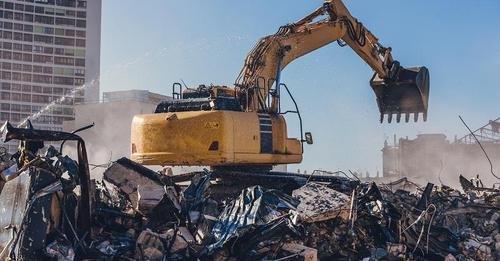Demolition, often viewed as the dramatic conclusion to a building’s lifecycle, is a meticulous process requiring careful planning, precision execution, and strict adherence to safety protocols. Whether it’s clearing space for new development or removing structures deemed unsafe, the procedure of demolition demands expertise and methodical approach. In this comprehensive guide, we delve into the intricate steps involved in the demolition process, shedding light on the art and science behind bringing down structures safely and efficiently.
- Pre-Demolition Assessment:
Before any demolition work begins, a thorough assessment of the structure and its surroundings is crucial. Engineers and demolition experts evaluate the building’s condition, materials used in construction, potential hazards such as asbestos or lead, and the proximity to neighboring structures. This assessment lays the groundwork for developing a demolition plan tailored to the specific requirements and challenges of the project.
- Permitting and Regulation Compliance:
Demolition projects are subject to various regulations and permitting requirements imposed by local authorities. Obtaining necessary permits and ensuring compliance with environmental, safety, and zoning regulations is essential. Failure to adhere to these regulations can result in fines, delays, or even legal repercussions. Demolition contractors work closely with regulatory bodies to secure permits and ensure all activities align with applicable laws and standards.
- Structural Analysis and Planning:
A comprehensive structural analysis is conducted to determine the most effective demolition methods and sequence. Factors such as building height, structural stability, presence of underground utilities, and surrounding infrastructure influence the planning process. Based on this analysis, demolition experts devise a strategy that minimizes risks, controls debris, and maximizes efficiency. Specialized equipment and techniques may be employed for different types of structures, such as high-reach excavators for tall buildings or controlled implosion for large-scale demolitions.
- Site Preparation:
Prior to demolition, the site must be prepared to ensure safety and efficiency. This includes securing permits for road closures or temporary utility shutdowns, erecting safety barriers and signage, and implementing dust and erosion control measures. Utility services such as water, electricity, and gas are disconnected, and hazardous materials like asbestos or lead are safely removed by certified professionals. The site is cleared of debris and any salvageable materials are salvaged for recycling or reuse.
- Demolition Execution:
With meticulous planning in place, the demolition phase commences. Specialized equipment such as excavators, bulldozers, cranes, and wrecking balls are deployed to dismantle the structure systematically. Demolition crews work methodically, starting from the top and working their way down, or from the inside out, depending on the structure and demolition method employed. Controlled demolition techniques are used to minimize noise, vibration, and dust, while ensuring the safety of workers and the surrounding environment.
- Debris Management and Waste Disposal:
As the structure is demolished, debris and waste materials are generated. Efficient debris management is essential to maintain a clean and safe worksite. Demolition contractors utilize dumpsters, trucks, and other equipment to collect and transport debris to designated disposal facilities. Recycling and salvaging materials such as concrete, metal, and wood are prioritized to minimize environmental impact and reduce landfill waste. Hazardous materials are disposed of in accordance with regulatory guidelines to prevent contamination.
- Site Remediation and Restoration:
Once demolition activities are completed, site remediation and restoration efforts begin. This may involve grading the land, backfilling excavated areas, and restoring vegetation to promote environmental sustainability. Any remaining hazardous materials are remediated, and soil quality is tested to ensure it meets regulatory standards. The site is inspected to verify compliance with demolition specifications and safety requirements before being handed over to the client or redeveloped for new purposes.
- Post-Demolition Evaluation and Documentation:
Following demolition, a thorough evaluation is conducted to assess the success of the project and identify lessons learned for future endeavors. Documentation of the demolition process, including permits, inspection reports, and waste disposal records, is compiled for regulatory compliance and client reference. Feedback from stakeholders, including clients, engineers, and demolition crews, is solicited to improve practices and streamline processes for future projects.
In conclusion, the procedure of demolition is a multifaceted endeavor that requires meticulous planning, expert execution, and strict adherence to safety and regulatory standards. From pre-demolition assessment to post-demolition evaluation, each step is integral to the overall success of the project. By employing advanced techniques, innovative technologies, and sustainable practices, demolition professionals continue to redefine the art and science of bringing down structures while safeguarding communities and the environment.





